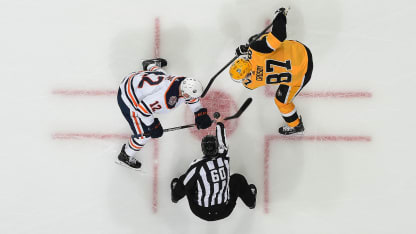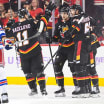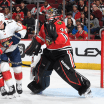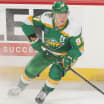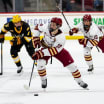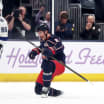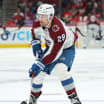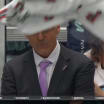There are many set plays when taking an offensive-zone face-off. The main objective is to get the puck and traffic to the net. It's a simple philosophy but every shot to the net, every rebound you create and every obstacle you place around the net increases the degree of difficulty for the defending team.
I have pre-scouted teams with more than 10 set plays off a win in the attacking zone. It's important to know how defend each, but the difficulty comes in defending the shot, if it happens, and what happens after the shot.
Some teams have very intricate offensive-zone schemes, which can cause coverage problems. The most difficult to be defend might be crossing plays when the wing's movement can be hard to read.
Wings jumping off the wall and behind the center and shooting in motion can cause issues, especially if the player is an explosive skater such as William Karlsson of the Vegas Golden Knights or Nikita Kucherov of the Tampa Bay Lightning. Their explosive power to the inside and quick releases can catch defenders by surprise. Those type of players make it difficult for the board-side defensemen to defend. Therefore, the wings must provide support.
Other challenging situations include defensemen activating down the wall (D down), quick-release plays such as one-timers, wings crossing at different levels (over/under), pop plays (a player pops high for a quick release) and centers going forward.
The key to defending these plays is communication, knowing roles and executing. Players must fulfill their obligations, but if they fail because they misread the play or were obstructed, teammates must adapt their jobs and defend what is important; "The House" -- the area from the goal posts to the face-off dots to the tops of the circles.
In other words, teammates must read and check off their responsibilities while helping a teammate in trouble.
